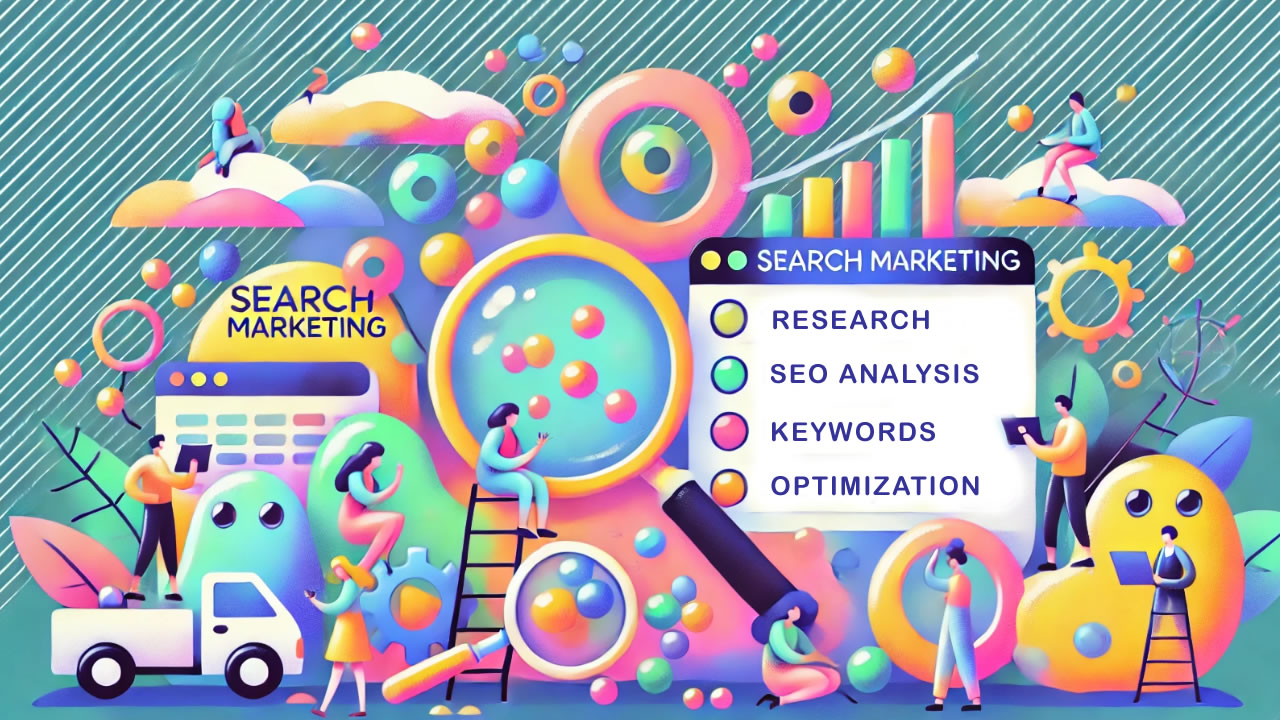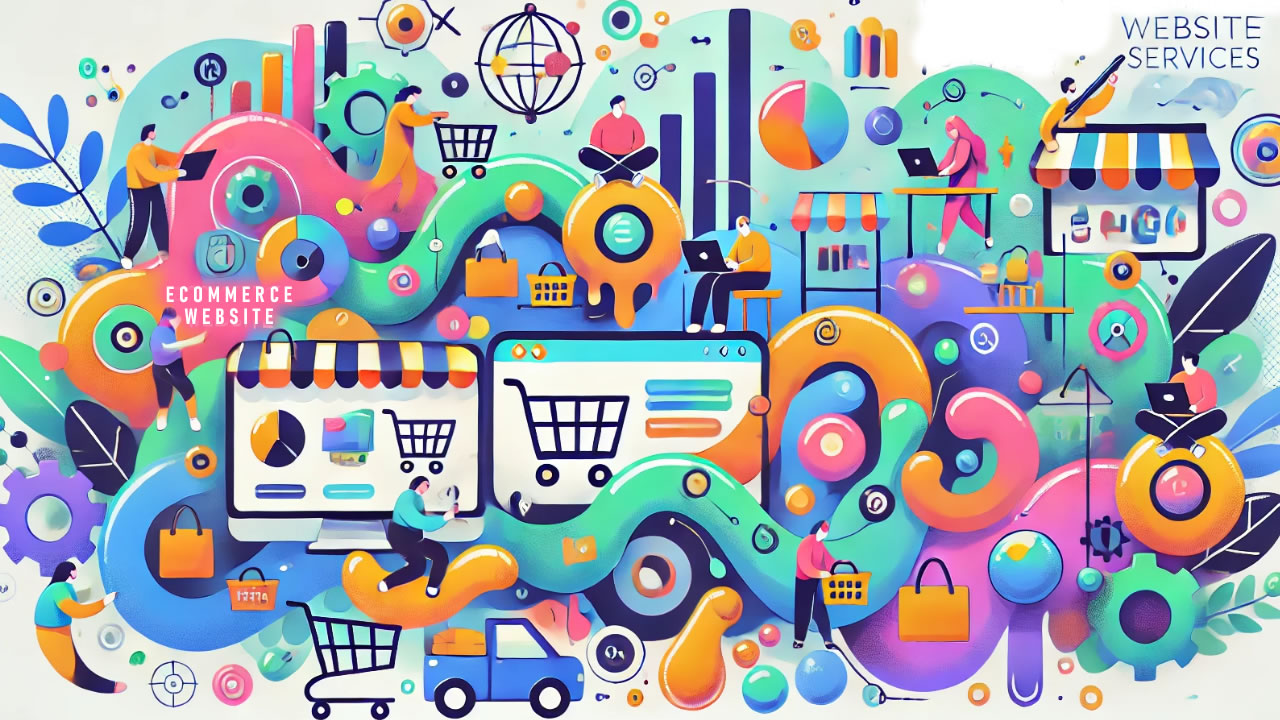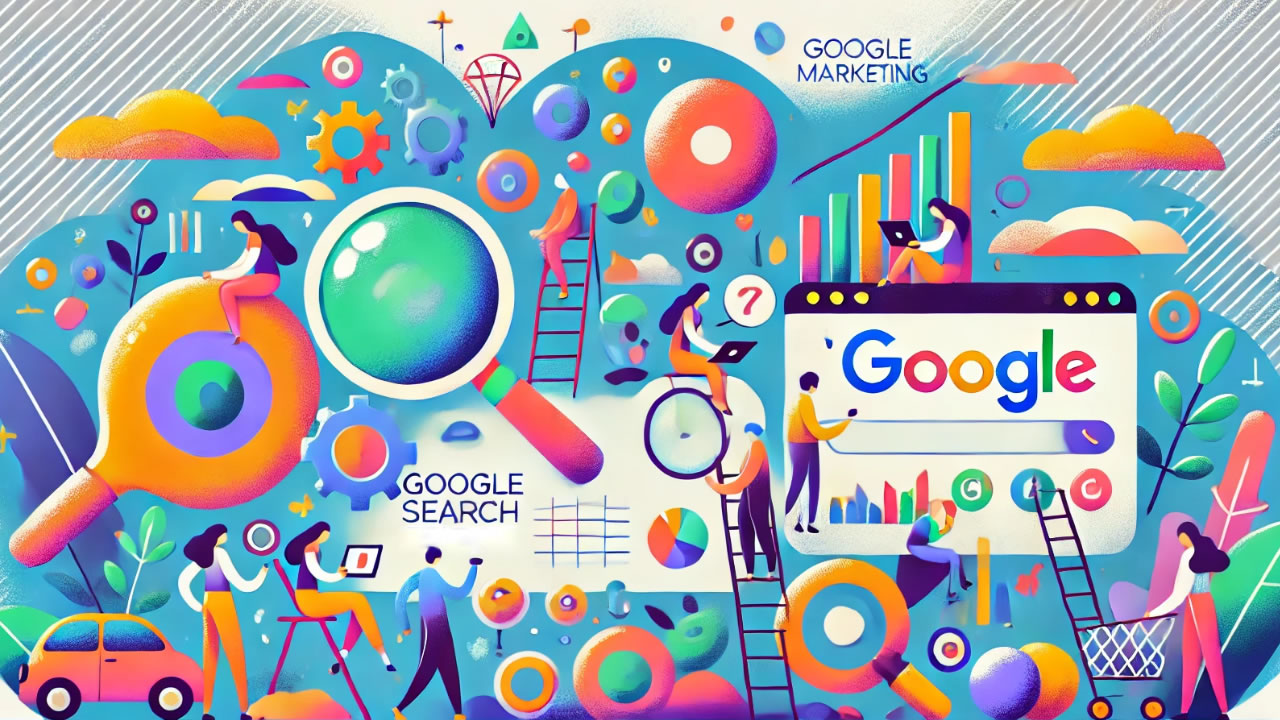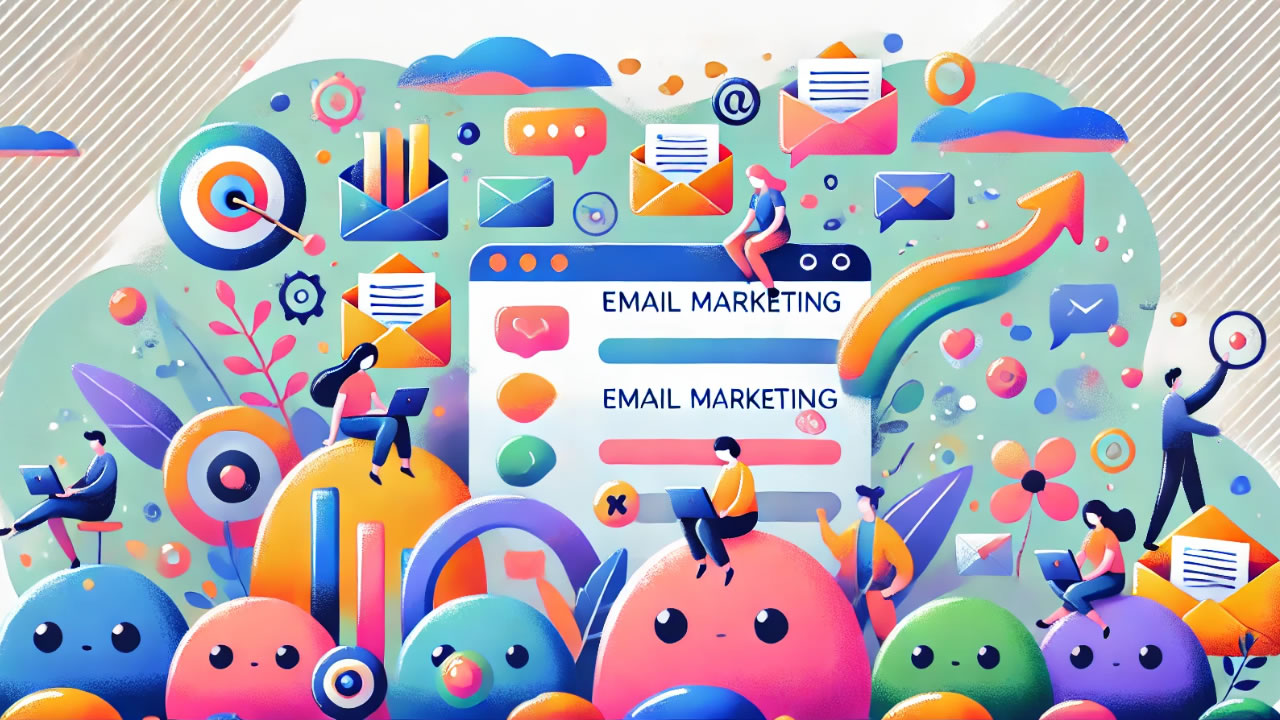Google Ads is one of the most powerful and versatile advertising platforms available to businesses today. With a wide range of ad formats, Google allows advertisers to reach potential customers across its massive network. In this blog post, we’ll explore the 9 different types of Google Ads—Search Ads, Display Ads, Shopping Ads, Video Ads, App Ads, Discovery Ads, Local Services Ads, Performance Max Ads, and Smart Ads. We’ll dive into the unique benefits and challenges of each ad type, outline what kind of content works best for each format, and provide statistical insights to help you choose the right ad type for your campaign to maximize ROI.
1. Search Ads
Search Ads are the most common type of ad on Google and appear at the top of the search results when users query specific keywords.
Unique Benefits
High Intent Targeting: Search Ads appear when users are actively searching for products or services, which means they have a higher intent to purchase.
Cost-Effective for High Intent Clicks: With pay-per-click (PPC) pricing, businesses only pay when someone clicks on their ad, ensuring you pay for actual interest.
Customization: Advertisers can control keyword targeting, bids, ad copy, and landing pages to optimize results.
Problems
Highly Competitive: Popular keywords often have high competition, driving up cost-per-click (CPC) prices, especially in industries like law, finance, and healthcare.
Limited Ad Space: Since Search Ads appear as text at the top of the search results, they can be less engaging compared to visually driven formats.
Ad Content
Text-based: Headlines (up to 3), descriptions (up to 2), URL, and ad extensions (sitelinks, callouts, call extensions, etc.).
Statistical Overview
Average CPC: $1-$2, though certain industries may see CPCs as high as $50-$100.
Click-Through Rate (CTR): 3-5% for most industries.
Conversion Rate: 3-5% across industries, with some B2B sectors seeing higher conversion rates.

2. Display Ads
Display Ads are visually rich ads that appear across the Google Display Network, which includes over 2 million websites, apps, and Google-owned properties like Gmail and YouTube.
Unique Benefits
Wide Reach: Display Ads have enormous reach, allowing businesses to generate awareness and target users across millions of websites.
Visually Engaging: Since Display Ads use images and videos, they are more likely to capture attention compared to text-based Search Ads.
Cost-Effective for Awareness: Typically, Display Ads have lower CPCs, making them ideal for top-of-funnel awareness campaigns.
Problems
Lower Conversion Rates: Users who see Display Ads may not be in an active buying mode, leading to lower conversion rates compared to Search Ads.
Ad Blindness: Many users have developed “banner blindness” and may ignore these ads due to their frequency across the web.
Ad Content
Image-based: Static images, animated GIFs, responsive display ads (automatically adjust size and layout), and HTML5-based creative.
Video-based: Short video ads are also possible, though they are less common on the Display Network.
Statistical Overview
Average CPC: $0.50-$1.
CTR: Typically around 0.35%, much lower than Search Ads.
Conversion Rate: 0.5-1%, depending on targeting and ad quality.
3. Shopping Ads
Shopping Ads are ideal for eCommerce websites and display product listings with images, prices, and store names at the top of Google search results.
Unique Benefits
High Purchase Intent: Since Shopping Ads are triggered by product-specific searches, users are typically in the buying stage of the funnel. This makes them great for marketing your online store.
Visual Appeal: Shopping Ads show product images directly in the search results, making them more visually compelling and informative than Search Ads.
Detailed Information: These ads include product prices, store name, reviews, and other information that helps users make informed decisions.
Problems
Limited to eCommerce: Only available to businesses selling physical products, making it unsuitable for service-based businesses.
Complex Setup: Requires a properly configured product feed in Google Merchant Center, which can be technically complex.
Ad Content
Product Information: Image, title, price, product description, business name, and product rating. The product feed must be set up in Google Merchant Center.
Statistical Overview
Average CPC: $0.40-$1 for most products, though luxury or high-margin items may see higher CPCs.
CTR: Around 0.9%-1.25%.
Conversion Rate: 1.5-2.5%, depending on the product and bidding strategy.

4. Video Ads
Video Ads run on YouTube and across Google’s Display Network. These ads can appear before, during, or after video content on YouTube.
Unique Benefits
High Engagement: Video ads are engaging and more likely to capture users’ attention compared to text or static images.
Targeted Reach on YouTube: With over 2 billion monthly users, YouTube offers massive potential for video ads to reach targeted audiences.
Strong Branding Opportunities: Video allows for creative storytelling and strong branding efforts.
Problems
Costly to Produce: Producing high-quality video content can be expensive and time-consuming.
Viewer Avoidance: Some users may skip ads (after 5 seconds) or use ad-blockers, reducing engagement.
Ad Content
Video-based: Formats include skippable in-stream ads, non-skippable ads, bumper ads (6 seconds), and discovery ads (appear in YouTube search results).
Statistical Overview
Average Cost per View (CPV): $0.05-$0.30.
View-Through Rate (VTR): 15-45%, depending on targeting and video quality.
Conversion Rate: 1-2% for direct response ads, higher for awareness campaigns.
5. App Ads
App Ads promote mobile app downloads across Google Search, Play Store, YouTube, and Google’s Display Network.
Unique Benefits
Cross-Platform Promotion: App ads are shown across multiple Google properties, increasing visibility and the likelihood of downloads.
Automated Ad Placement: Google automatically optimizes where your app ad will appear based on user behavior and past performance, reducing manual work.
Install-Driven: These ads are designed specifically to drive app downloads, making them perfect for app-based businesses.
Problems
Limited Ad Formats: Ads are focused on app install campaigns and therefore lack flexibility for promoting other types of business goals.
App Saturation: With millions of apps available, competition for installs can be high, especially in popular app categories.
Ad Content
App-based: Text from your app listing, images, videos, and in-app screenshots. Ad placement and creatives are automatically generated based on the app’s Google Play Store or App Store listing.
Statistical Overview
Average Cost per Install (CPI): $1.50-$3, depending on the app category.
Conversion Rate: 1-3% for app installs and in-app actions.
6. Discovery Ads
Discovery Ads are designed to appear across Google’s Discovery Feed (on mobile), YouTube’s Home and Watch Next feeds, and Gmail promotions.
Unique Benefits
Visually Engaging: Discovery ads use rich, image-based formats to capture attention, similar to Display Ads but with more personalized placements.
Targeted Audience Reach: These ads are shown to users based on their activity across Google services, allowing for precise interest-based targeting.
Optimized for Mobile: Discovery Ads are highly optimized for mobile devices, where many users interact with personalized content.
Problems
Limited to Mobile and Feed-Based Placement: Discovery Ads mainly appear on mobile devices, limiting their reach compared to other Google Ad types.
Lacks Search Intent: Like Display Ads, Discovery Ads target users based on interests rather than search intent, resulting in lower conversion rates for certain goals.
Ad Content
Image-based: Responsive ads with headlines, descriptions, and multiple images (up to 5), similar to carousel-style ads.
Statistical Overview
Average CPC: $0.80-$1.20.
CTR: Around 0.7%-1%.
Conversion Rate: 1-2%, depending on the niche and visual quality.
7. Local Services Ads
Local Services Ads are ideal for service-based businesses that want to connect with local customers. These ads appear at the top of Google search results when users search for services in their area (e.g., plumbers, electricians).
Unique Benefits
Pay Per Lead: Unlike other ad formats, Local Services Ads operate on a pay-per-lead basis, meaning businesses only pay when a user contacts them.
Trust and Credibility: These ads include a Google Guaranteed badge, which helps build trust with potential customers.
Localized Targeting: These ads are highly localized, making them perfect for small businesses looking to reach customers in their geographic area.
Problems
Limited Industries: Local Services Ads are only available to certain service-based industries like home services, legal, and real estate.
Higher Lead Costs: Since the pay-per-lead model can be expensive, lead costs may be higher than typical CPC campaigns.
Ad Content
Service-based: Includes business information like hours, location, reviews, and the Google Guaranteed badge. No custom images or text are required.
Statistical Overview
Average Cost per Lead: $15-$50, depending on the industry.
Conversion Rate: 5-10%, since users contacting the business are highly qualified.

8. Performance Max Ads
Performance Max Ads are a newer ad format that allows advertisers to run a single marketing campaign across all of Google’s ad inventory (Search, Display, YouTube, Discover, Gmail, and Maps).
Unique Benefits
Cross-Channel Reach: Performance Max Ads maximize reach by showing ads across all of Google’s properties, giving businesses full coverage with a single campaign.
Automated Targeting: Google uses machine learning to optimize your campaign based on real-time data, helping you achieve the best results with minimal manual intervention.
Unified Reporting: This format offers a single report across all channels, simplifying campaign management and tracking.
Problems
Less Control: While automation is helpful, advertisers lose some control over specific targeting and ad placements.
Limited Transparency: Performance Max campaigns don’t provide as detailed data on which channels are driving the best results, making optimization more difficult.
Ad Content
Responsive: Performance Max uses a combination of text, images, and video that Google automatically optimizes for different placements.
Statistical Overview
Average CPC: Varies widely based on campaign goals, but typically within $0.60-$1.50.
Conversion Rate: 3-5% across all Google properties.
9. Smart Ads
Smart Ads are automated campaigns where Google uses machine learning to optimize ad targeting and bidding for small businesses with limited advertising experience.
Unique Benefits
Automation: Smart Ads handle almost every aspect of campaign creation, including targeting, bidding, and ad placement, making it ideal for beginners.
Quick Setup: These campaigns require minimal input from advertisers, making it easy to set up and launch quickly.
Local Business Focus: Google’s Smart Ads are tailored for small businesses looking to drive local foot traffic or online conversions.
Problems
Less Customization: The automation can be a drawback for experienced advertisers who want more control over their campaigns.
Limited Reporting: Smart Ads offer less detailed reporting and data transparency compared to manual campaigns.
Ad Content
Text and Image-based: Google automatically generates ads based on the information you provide, such as business name, description, and images.
Statistical Overview
Average CPC: $1.00-$1.50, depending on industry and targeting.
Conversion Rate: 2-4%, based on automation’s ability to optimize for conversions.
Summary and Tips for Choosing the Right Google Ad Type
| Ad Type | Unique Benefits | Problems | Best For |
|---|---|---|---|
| Search Ads | High intent targeting, cost-effective for clicks | High competition, limited space for visuals | Businesses targeting high-intent searchers |
| Display Ads | Wide reach, visually engaging | Lower conversion rates, banner blindness | Brand awareness, top-of-funnel campaigns |
| Shopping Ads | Visual appeal, high purchase intent | Only for e-commerce, complex setup | E-commerce businesses |
| Video Ads | High engagement, YouTube reach | Costly production, ad avoidance | Brand storytelling, YouTube users |
| App Ads | Cross-platform promotion, automated placements | Limited formats, high app saturation | App-based businesses |
| Discovery Ads | Mobile-optimized, visually rich | Mobile and feed-limited, lacks search intent | Mobile users, interest-based targeting |
| Local Services Ads | Pay-per-lead, localized targeting | Limited industries, higher lead costs | Service-based businesses, local targeting |
| Performance Max Ads | Cross-channel reach, automated targeting | Less control, limited transparency | Advertisers looking for cross-channel reach |
| Smart Ads | Fully automated, beginner-friendly | Limited customization, less detailed reporting | Small businesses with minimal advertising experience |
Tips for Selecting the Right Google Ad Type
For lead generation: Consider Search Ads or Local Services Ads if your business relies on generating leads from local customers or high-intent searches.
For brand awareness: Use Display Ads, Video Ads, or Discovery Ads to increase visibility and engagement across Google’s Display Network and YouTube.
For eCommerce: Shopping Ads or Performance Max Ads are ideal for driving product sales, especially if you want to maximize your reach across Google properties.
For app promotions: Use App Ads to target potential users and drive app downloads across multiple Google networks.
For beginner advertisers: If you’re new to Google Ads, Smart Ads provide an easy, automated option that handles targeting, bidding, and optimization for you.
By understanding the strengths and weaknesses of each ad type, you can tailor your campaigns to better suit your advertising goals and reach the right audience.
If you would like to learn more about Google ads and compare them to other platforms, check out Ad Platforms Compared: Google, Meta, Microsoft, LinkedIn
Start Advertising With Google Ads Today
Schedule A CallRead more about Advertising

How To Choose The Right Google Ad Type For Your Business

Website Checklist: What to Do Before You Begin an Ad Campaign
